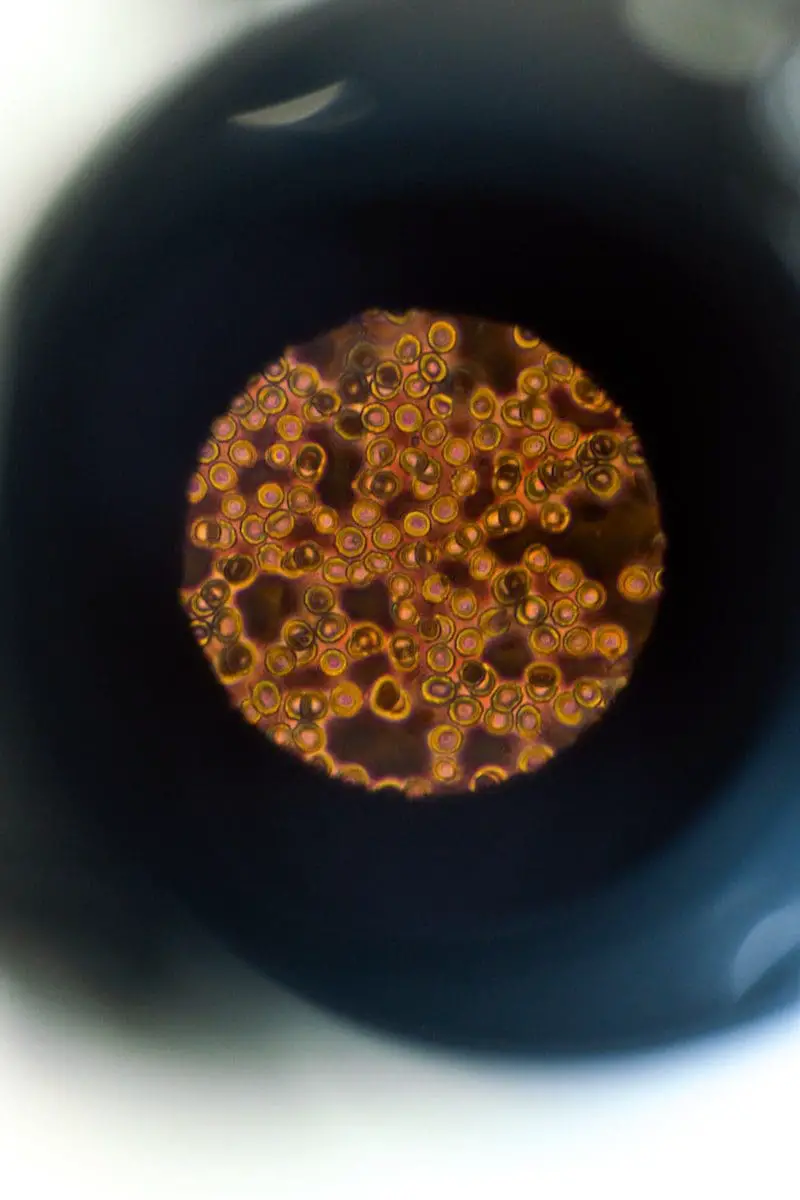Urea and uric acid are two different substances that were considered as same in normal use. Urea and uric acid are both waste substances in the body. This moves out of the body through excreta.
Urea and uric acid also have other uses in society as chemicals. They are used as fertilizers and other useful items. So here is a discussion of the difference between these two terms, urea and uric acid.
Key Takeaways
- Urea is a waste product formed in the liver when the body breaks down proteins and excretes them through urine.
- Uric acid is a waste product produced by the breakdown of purines found in many foods and drinks.
- Urea is more water-soluble and less toxic than uric acid, which can build up in the body and cause gout or kidney stones.
Urea vs Uric Acid
Urea is made from waste products when the protein breaks down. Urea is used as fertilizer for improving plant growth. The chemical formula of urea is (NH2)2 CO. Uric acid is made from the breakdown of purines, and the excess of uric acid in the body can cause stones in the kidney.

Urea is the main component of urine in humans. Urine is the excretion of humans in liquid form. Uric acid is also secreted as sweat from the human body. The chemical formula of urea is (NH2)2 CO.
Urea is colorless, soluble in water, odorless, and neutral. It has widespread uses in fertilizer industries.
Uric Acid is the main component of the solid excreta of birds. Uric acid is also found in human excreta. The chemical formula of uric acid is C5H4N4 O3. This is an organic chemical. A prolonged deposit of uric acid is injurious to health. It can result in kidney failure and even death.
Comparison Table
| Parameters of Comparison | Urea | Uric Acid |
|---|---|---|
| Released as | As urine in human | Solid faecal matter in birds |
| Formula | (NH2)2 CO | C5H4N4 O3 |
| Uses | Has widespread uses | Has minimum uses |
| Excess amount reaction in humans | This leads to failure of the kidney. | This leads to kidney stones. |
| Prolonged deposit | Very much harmful for tissues | Less harmful to tissues as compared to uric acid |
What is Urea?
Urea is the main component of urine in humans. Urine is the excretion of humans in liquid form. Uric acid is also secreted as sweat from the human body.
The chemical formula of urea is (NH2)2CO. Urea is colorless, soluble in water, odorless, and neutral. It has widespread uses in fertilizer industries.
Urea is an organic compound. It is considered a waste product in the human body. Urea is produced in the liver due to the breakdown of proteins into amino acids and then amino acids to urea. The kidney transfers the urea from the blood to the urine and gets it out of the body.
The prolonged deposition of urea in kidney cells is very harmful to health. The increased level of urea in the body results in kidney failure, and a person may have to spend the rest of their life with dialysis.
Nowadays, urea is manufactured in industries. Synthetic urea is produced with the help of ammonia and carbon dioxide in both solid and liquid forms. In this synthetic urea, the nitrogen content is very high and appropriate to be used as fertilizers.
Nowadays, 90% of nitrogenous fertilizers contain urea as their main ingredient. In the soil, the urea breaks into ammonia. The bacteria present in the soil convert the ammonia into nitrates which plants then take.
Urea is highly soluble in water, which makes it more preferable and easier to make solutions and spray them to the agricultural plants.

What is Uric Acid?
Uric Acid is the main component of the solid excreta of birds. Uric acid is also found in human excreta. The chemical formula of uric acid is C5H4N4O3. This is an organic chemical. A prolonged deposit of uric acid is injurious to health. It can result in kidney failure and even death.
Uric acid is formed in the body of humans due to the breakdown of a chemical called purines. The uric acid gets dissolved in the blood and then filtered by the kidney.
This uric acid is thrown out of the body through urine. But due to our diet and lifestyle, some people have increased levels of uric acid in their bodies which is very harmful.
These extra uric acid form crystals and settle at the joints of knees, and other joints, resulting in pain. This medical condition is called arthritis. Prolonged deposition of uric acid in the kidney leads to kidney stones and other health problems.
Uric acid deposition is more harmful as compared to urea deposition.
Uric acid is found in the solid fecal matter of birds and reptiles. They release it as a nitrogenous waste product from their body. This happens because the conversion of ammonia to urea needs more energy as compared to the conversion of ammonia to uric acid.
To save energy, they convert ammonia to uric acid and discard it from their body.

Main Differences Between Urea and Uric Acid
- It is released with human excreta as urine in liquid form, whereas uric acid is found in the solid excreta of birds.
- The chemical formula of urea is (NH2)2 CO and the chemical formula of uric acid is C5H4N4O3.
- Urea has widespread uses in the fertilizer industry. On the other hand, uric acid is only used in the diagnosis of health disorders.
- An excess amount of level of urea in humans leads to kidney failure, but an over level of uric acid leads to a kidney stone in humans.
- Prolonged deposition of urea in the tissues is comparatively less harmful than uric acid deposition.

- https://academic.oup.com/clinchem/article-abstract/8/2/130/5672375
- https://www.nejm.org/doi/full/10.1056/NEJMra0800885

This provided a comprehensive summary of the differences between urea and uric acid. Very useful.
Yes, I appreciate the detailed comparison between the two substances. It’s informative and well written.
I found the discussion of urea and uric acid to be incredibly deep and thorough. It was a great learning experience.
Absolutely. This article was highly informative. It’s not we come across such comprehensive coverage of these topics.
I thoroughly enjoyed reading this article. The detailed analysis of urea and uric acid was presented with great clarity and depth.
I completely agree. It was a well-structured, informative piece.
Yes, it’s evident that the article was backed by substantial research and expertise. Very insightful.
This article was a great resource in understanding the distinction between urea and uric acid. It was both extensive and enlightening.
I second that. It was a well-crafted article with a wealth of valuable information.
Yes, I feel like I’ve gained a thorough understanding of urea and uric acid from reading this article. It’s a solid piece of work.
The discussion about urea and uric acid was enlightening. I appreciated the clear comparison of their chemical properties and uses.
Absolutely, I feel like I’ve developed a better understanding of urea and uric acid after reading this article. Very educational.
The detailed breakdown of urea and uric acid was incredibly helpful. I never knew about the chemical compositions of both and this article was enlightening.
I agree. I learned so much from this article. It’s great to have a better understanding of these chemical compounds and their impact on health.
This was a very educational article. I appreciate the comprehensive coverage of urea and uric acid, and the impact of each on the human body.
Agreed. It was a valuable read, and I learned a lot from it.
I found this article fascinating. I had been confused about the differences between urea and uric acid and this post cleared up all of my misconceptions.
Agreed. It’s really helpful to understand the uses and implications of urea and uric acid. Very informational.
I had the same experience. The distinction between the two substances has always been unclear to me. This article helped clarify my doubts.
This was an excellent article in terms of explaining the critical differences between urea and uric acid in a clear and understandable manner.
Absolutely, I valued the in-depth comparison. It’s helpful for both scientific understanding and general knowledge.
This article served as an exceptional educational piece. It tackled a complex subject and made it accessible to readers.
This article provided a comprehensive and informative study of urea and uric acid. The comparison table was particularly valuable in highlighting the distinctions.
I found this to be an engaging and well-researched discussion of urea and uric acid. It clarified a number of misconceptions I had.
I couldn’t agree more. The comparison table was a great addition to an already exceptional article.